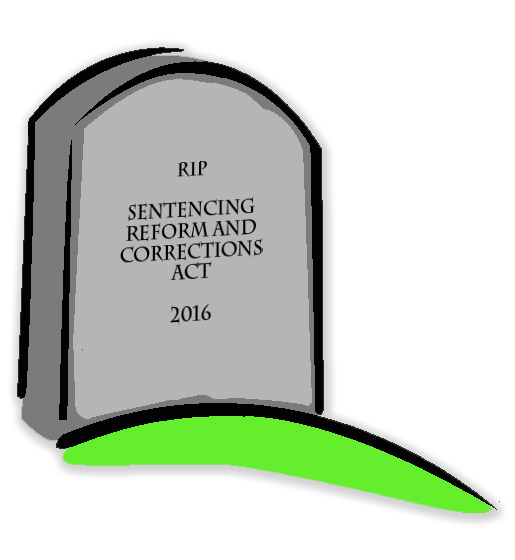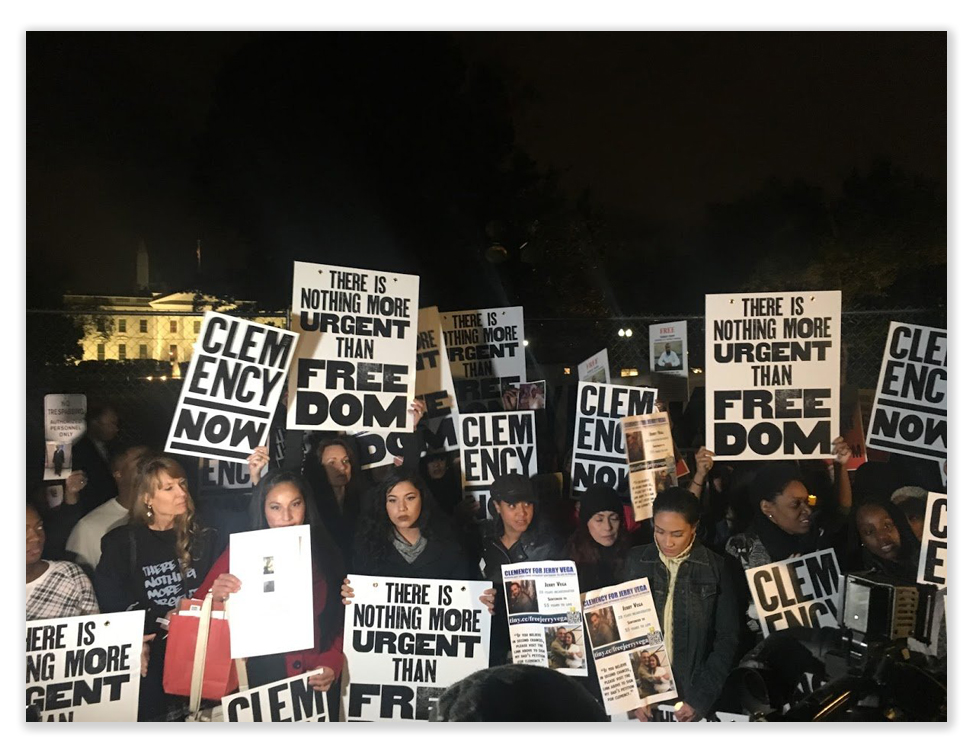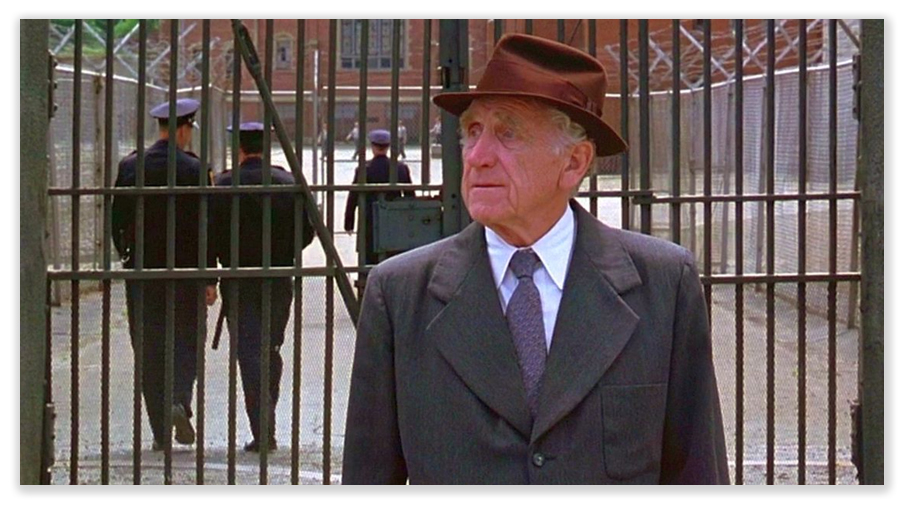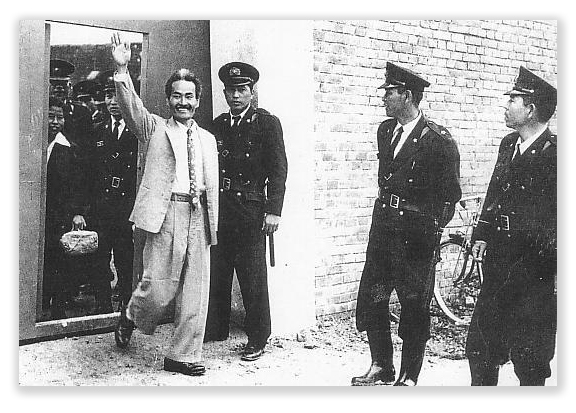We’re still doing a weekly newsletter… we’re just posting pieces of it every day. The news is fresher this way…

HE’S HIS OWN MAN
There are plenty of whacko legal theories advanced by inmates representing themselves in criminal or post-conviction proceedings, but it’s good every now and then to be reminded that the Clown Prince of these crazy get-out-of-jail-free cards continues to be the Sovereign Citizen.
 Think about a law you don’t like. Any law, at any level of government. It can be a big law, like the Controlled Substances Act or income tax laws. It could be minor, like licensing your dog with the county or separating your recyclables from the general trash.
Think about a law you don’t like. Any law, at any level of government. It can be a big law, like the Controlled Substances Act or income tax laws. It could be minor, like licensing your dog with the county or separating your recyclables from the general trash.
If you’re a member of the sovereign citizen movement, Forbes magazine described how you approach the problem:
You start by looking for a combination of quotes, definitions, court cases, the Bible, Internet websites, and so on that justify how you can ignore the disliked law without any legal consequences. Be imaginative. Pull a line from the 1215 version of the Magna Carta, a definition from a 1913 legal dictionary, a quote from a founding father or two, and put it in the blender with some official-sounding Supreme Court case excerpts you found on like-minded websites. Better yet, find someone else online who disliked that same law and pay them $150 for a three-ring binder filled with their word salad research.
Et voilà, not only have you proven that you don’t have to obey the law you dislike, heck, it’s your patriotic duty to disobey it, and anyone who tells you otherwise is just plain un-American and is probably part of a world-wide Jewish conspiracy to ensure that Chihuahuas are slaves to the US government.
The Sovereign citizen movement has its adherents within the federal prison system, and the most puzzling aspect of this is that – while claiming sovereignty only makes things harder for the defendant and inevitable inmate – none of them ever seems to figure that out that being a Sovereign citizen is a dead-bang loser of a proposition.

We were reminded of how the sovereign movement is at once bafflingly foolish and uniquely futile in a 6th Circuit decision earlier this week on a defendant’s right to self-representation. Jermaine Pryor (also known as “Daffy Duck,” and we’re not making that up) ran a heroin operation. He figured it was pretty slick: people would call a cellphone and ask for “Daffy Duck.” After placing their order, Daffy would tell them when and where to show up for the dope. When he was pulled over for the usual pretext traffic stop and arrested, one of the agents called the “Daffy Duck” phone number, and Jermaine’s cellphone rang. Oops.
When he appeared before a magistrate judge, Jermaine appeared to object to the jurisdiction of the court, announcing that he had “no contracts with the United States corporation or anybody in this courtroom,” and repeatedly ignored the magistrate judge’s requests to be quiet. The court brought him back the next day to complete his initial appearance, and appointed an attorney as his stand-by counsel. Jermaine complained he was “never going to consult with” the attorney, and argued that he was “not a part of your society. . . . I am a moor, and your laws don’t apply to me.” The magistrate judge asked Jermaine if he consented to the appointment, and Jermaine answered “No. I don’t have—no, I don’t consent to anything.” When asked if he intended to hire his own attorney, Pryor indicated that he would not: “Why would I — I am not a minor and no one . . . will be talking for me.”

Next thing Jermaine knew, he was committed for a psych evaluation to see whether he was competent to stand trial. He was competent, just stupid. When he appeared again, the judge directly asked him, “do you wish to represent yourself or do you wish to have counsel represent you?” Jermaine answered “I will be myself” and again challenged the court’s jurisdiction. The court repeated the question, and Pryor asked if the judge was offering him a contract (one of the tenets of the sovereign movement is that if you enters into a contract with the feds, the federal courts gain jurisdiction over you). Jermaine even objected to the court calling him “Mr. Pryor.” The court continued the lawyer as Jermaine’s backup counsel, to which Jermaine immediately and repeatedly objected.
Jermaine figured that if he had a lawyer, then he was consenting to the court’s jurisdiction over him. The notion is loony, but the defendant clung to it like it was his momma.
Jermaine continued to pepper the court with gibberish. On March 19, he submitted an “Affidavit of truth” to the court, disclaiming the court’s jurisdiction, announcing that he had no contracts with any corporation or the United States of America, and stating his standby lawyer “will not represent me.” He later filed affidavits continuing to assert his desire to appear in propria persona and contesting the court’s jurisdiction. The court finally entered an order automatically rejecting any Jermaine letters, which did not squelch the letter-writing campaign in the least.
To no one’s surprise, he was convicted of the drug offense.

In this week’s 6th Circuit decision, the court disposed of Jermaine’s jurisdiction arguments in a couple of sentences. Yes, the federal drug trafficking laws are a proper exercise of federal authority under the Commerce Clause. Yes, federal courts have subject-matter jurisdiction of cases alleging violation of those laws. Yes, the courts have personal jurisdiction over defendants who are forced into court in handcuffs. Yes, the trial judge was a legitimate Article III judge.
Jermaine’s real appellate issue was whether he had waived his right to a lawyer. Admittedly, this seems like the kid who killed his parents, and then asked the court for mercy because he was an orphan. All through the trial, he rejected the court’s efforts to appoint counsel, even while refusing to answer the court’s questions. Guys like Jermaine make the 6th Amendment’s guarantee of the right of the accused “to have the assistance of counsel for his defense” tough to parse.
The Circuit noted that the 6th Amendment guarantee “implies a right of self-representation,” which can cause friction a times. The Court said that the right to self-representation and the right to counsel are “two faces of the same coin,” because “the assertion of one necessarily requires the waiver of the other.” Because the dangers of self-representation during trial are so substantial, the Circuit said, “a court must make a “searching or formal inquiry” before permitting a waiver of the right to counsel (although no such inquiry is required for the correlative waiver of right to self-representation).” No degree of legal knowledge is required – as Jermaine well illustrated – to assert the right, “so long as the defendant appreciates what he is forgoing.”
 Where a request to self-represent is clear, unequivocal, and timely, a trial court must ask the defendant a series of questions drawn based on a template approved for federal judges. But Jermaine frustrated this effort. “To almost every question,” the 6th said, he “responded with a question of his own, mostly addressed at the court’s jurisdiction. When the magistrate judge asked directly whether Pryor wished to represent himself or have counsel represent him, the closest Pryor came to acknowledging that he wished to represent himself was his statement ‘I will be myself.’ This statement can hardly be called a clear assertion of the right to self-representation, especially given Pryor’s failure to confirm that meaning of his statement upon repeated inquiries by the judge.”
Where a request to self-represent is clear, unequivocal, and timely, a trial court must ask the defendant a series of questions drawn based on a template approved for federal judges. But Jermaine frustrated this effort. “To almost every question,” the 6th said, he “responded with a question of his own, mostly addressed at the court’s jurisdiction. When the magistrate judge asked directly whether Pryor wished to represent himself or have counsel represent him, the closest Pryor came to acknowledging that he wished to represent himself was his statement ‘I will be myself.’ This statement can hardly be called a clear assertion of the right to self-representation, especially given Pryor’s failure to confirm that meaning of his statement upon repeated inquiries by the judge.”
Jermaine’s “refusal to provide a straight answer to the thrice-repeated question of whether he wished to be represented by counsel or by himself was a rejection of further inquiry into his waiver of counsel and justified the magistrate judge’s conclusion of the colloquy,” the Court of Appeals concluded. “A court facing such resistance can hardly be expected to proceed through the questions in anticipation that the defendant may change his mind and begin responding.”
United States v. Pryor, Case No.15-2123 (6th Cir. Nov. 22, 2016)

































